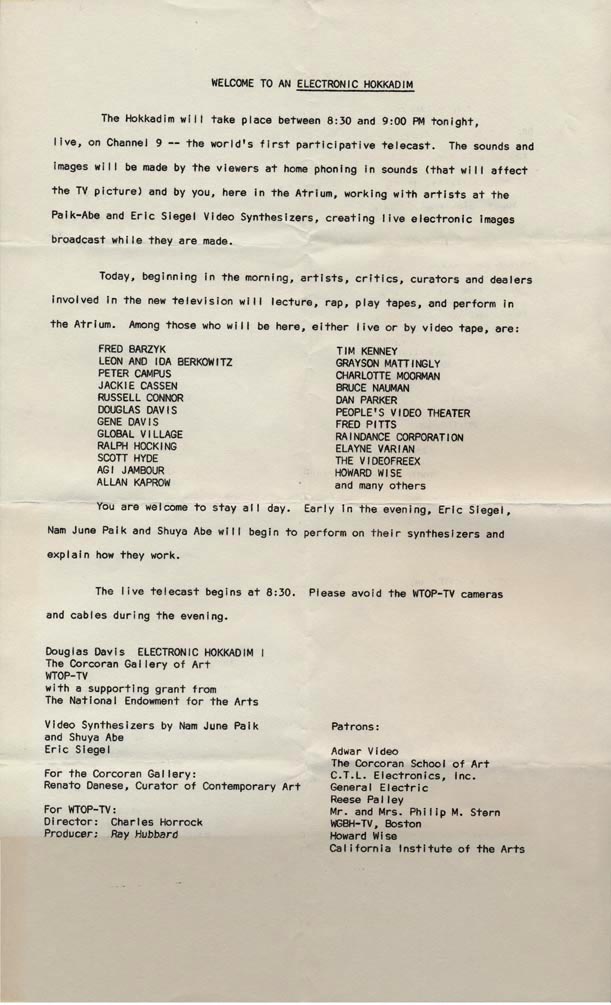A Kinetic History: The EAI Archives Online
A Kinetic History: The EAI Archives Online
Electronic Hokkadim
On June 12, 1971, thirty minutes of live network broadcast air time was granted to writer and artist Douglas Davis by WTOP-TV in Washington DC. Viewers were invited to call in to the station and participate in a live electronic performance. Routed through either an oscilloscope or one of the Paik-Abe or Eric Siegel synthesizers, the wave pattern of their voice would effect the movement of the images on screen, translating timbre and pitch into rolls and glitches on the screen. Douglas?s so-called Electronic Hokkadim?a name derived from a collaborative African musical process in which singers contribute different notes?was one of the first opportunities for an artist to access the enormous communicative potential of broadcast television. Douglas televised live images of spectators at the Corcoran Gallery, in addition to videotapes of contemporary artists like Charlotte Moorman, Bruce Nauman, and Allan Kaprow.
